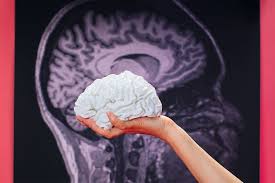
Breaking News
 The #1 Most Dangerous Fat in the World!
The #1 Most Dangerous Fat in the World!
 Is $140K the New Poverty Line? Is This the End of America's Middle Class?
Is $140K the New Poverty Line? Is This the End of America's Middle Class?
 Here Are the NEWLY RELEASED Epstein Images Tied to Powerful Democrats
Here Are the NEWLY RELEASED Epstein Images Tied to Powerful Democrats
 Joe Biden Still Struggling to Raise Money for Presidential Library – No New Donations...
Joe Biden Still Struggling to Raise Money for Presidential Library – No New Donations...
Top Tech News
 This tiny dev board is packed with features for ambitious makers
This tiny dev board is packed with features for ambitious makers
 Scientists Discover Gel to Regrow Tooth Enamel
Scientists Discover Gel to Regrow Tooth Enamel
 Vitamin C and Dandelion Root Killing Cancer Cells -- as Former CDC Director Calls for COVID-19...
Vitamin C and Dandelion Root Killing Cancer Cells -- as Former CDC Director Calls for COVID-19...
 Galactic Brain: US firm plans space-based data centers, power grid to challenge China
Galactic Brain: US firm plans space-based data centers, power grid to challenge China
 A microbial cleanup for glyphosate just earned a patent. Here's why that matters
A microbial cleanup for glyphosate just earned a patent. Here's why that matters
 Japan Breaks Internet Speed Record with 5 Million Times Faster Data Transfer
Japan Breaks Internet Speed Record with 5 Million Times Faster Data Transfer
 Advanced Propulsion Resources Part 1 of 2
Advanced Propulsion Resources Part 1 of 2
 PulsarFusion a forward-thinking UK aerospace company, is pushing the boundaries of space travel...
PulsarFusion a forward-thinking UK aerospace company, is pushing the boundaries of space travel...
 Dinky little laser box throws big-screen entertainment from inches away
Dinky little laser box throws big-screen entertainment from inches away
 'World's first' sodium-ion flashlight shines bright even at -40 ºF
'World's first' sodium-ion flashlight shines bright even at -40 ºF
First totally synthetic human brain model has been realized

This environment is carefully structured and carries signals that guide how cells behave and interact.
3D tissue-engineered models have strong potential to mimic the brain's complex structure and function. Yet it's still difficult to reproduce the brain's subtle design features in lab settings, since current methods often miss the fine details that shape cell behavior.
Scientists at the University of California, Riverside have now, for the first time, developed functional brain-like tissue without relying on animal-derived materials or biological coatings. Their innovation, called the Bijel-Integrated PORous Engineered System (BIPORES), offers a new, fully synthetic platform for neural tissue engineering.
This breakthrough could significantly reduce, and potentially eliminate, the need to use animal brains in research. It also supports the US FDA's ongoing initiative to phase out animal testing in drug development.
The new material is mainly made of polyethylene glycol (PEG), a chemically neutral polymer. On its own, PEG is like Teflon to cells; they slide right off. Usually, it needs a helping hand from proteins like laminin or fibrin to keep cells from falling off.
Scientists previously developed a technique called STrIPS to continuously produce tiny particles, fibers, and films with sponge-like internal structures. However, until now, these materials could only be made up to about 200 micrometers thick, limited by how molecules move through the material during formation.
To overcome this, researchers developed the BIPORES system. It combines large-scale fibrous shapes with intricate pore patterns inspired by bicontinuous interfacially jammed emulsion gels (bijels), soft materials with smooth, saddle-shaped internal surfaces. These BIPORES fibers are made from a gel-like PEG solution, which is transformed into a porous network and stabilized using silica nanoparticles.
Using a custom microfluidic setup and a bioprinter, the team then built 3D structures with layered, interconnected pores. These allow nutrients and waste to move freely and support deep cell growth. When tested with neural stem cells, the material encouraged strong cell attachment, growth, and even the formation of active nerve connections.
"Since the engineered scaffold is stable, it permits longer-term studies," said Prince David Okoro, the study's lead author. "That's especially important as mature brain cells are more reflective of real tissue function when investigating relevant diseases or traumas."
To build the scaffold, the team used a special liquid mix made of PEG, ethanol, and water. PEG doesn't mix well with water, so it behaves like oil, while ethanol helps everything blend smoothly. This mix flowed through tiny glass tubes.



